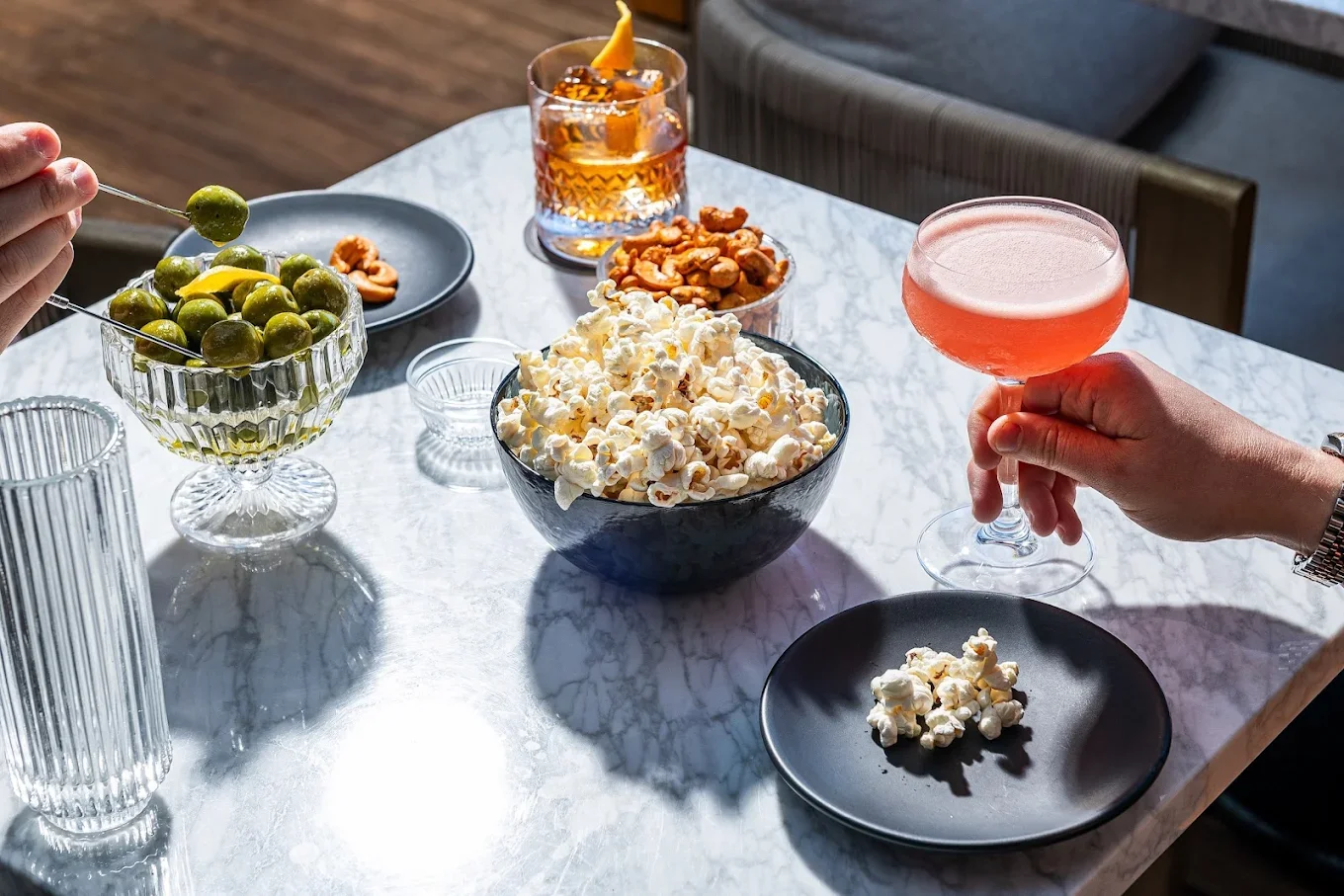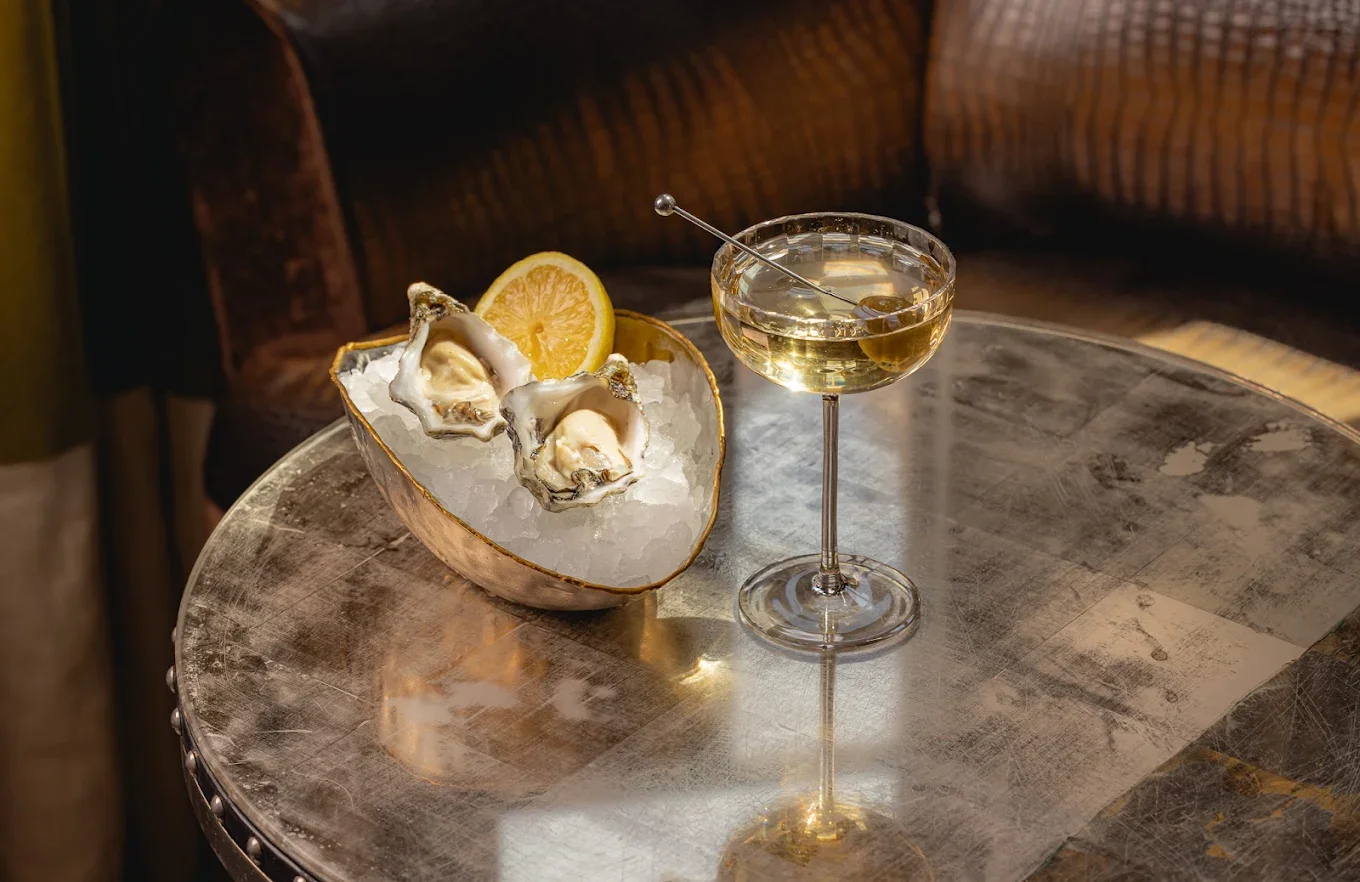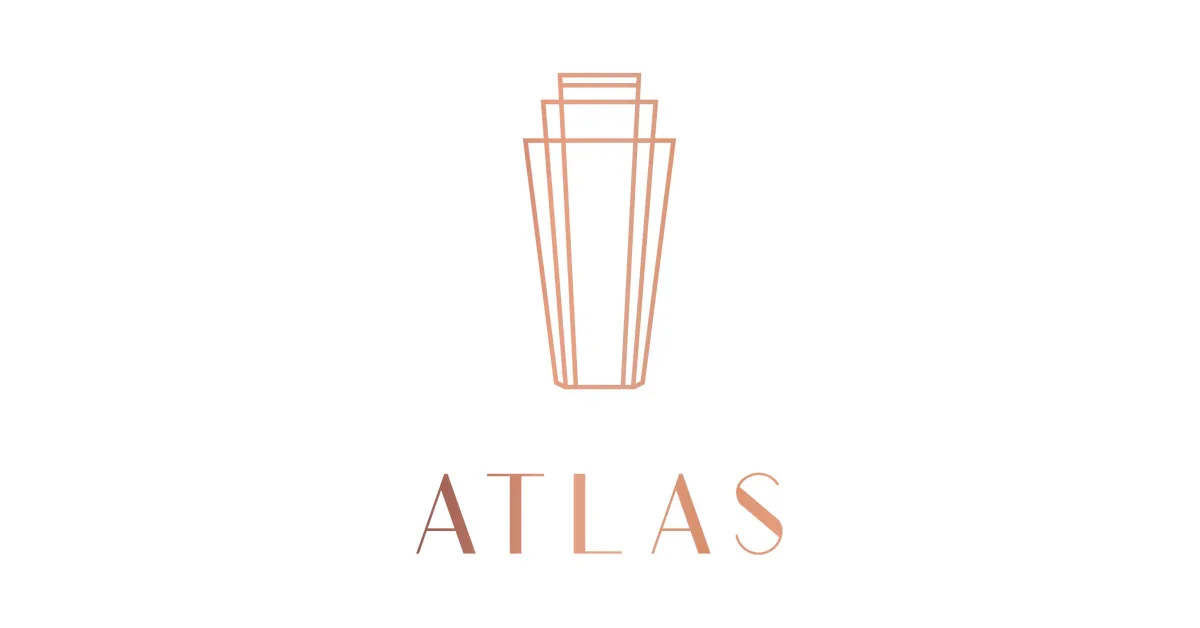Stir Up and Shake up Your brand Identity
Imagine a dimly lit bar where a tuft of smoke curls as a twist of citrus flame meets a glass of whisky – a theatrical moment where taste, sight, and scent converge. Such sensory performances show that every cocktail is not just a drink, but a story being told. In luxury mixology, the brand must feel just as cinematic and memorable as the cocktail itself. Today’s cocktail connoisseurs crave “storytelling cocktail experiences” and meaningful moments. The most successful cocktail bars deliver on that promise with a bold identity – using design, ritual, and narrative to transform a drink into a brand experience.
Why Branding Matters in Luxury Mixology
In high-end hospitality, branding works on an emotional level. Luxury drinkers expect exclusivity and trust, but above all, an emotionally resonant experience. Multi-sensory cues (visuals, music, aroma, taste, touch) make moments unforgettable: brands that engage multiple senses create stronger memories and loyalty. Research shows that when a brand delivers consistent sensory experiences, it can boost brand impact by up to 30%. For cocktail bars, this means that every element – from a signature scent in the lobby to the clink of ice – must reinforce the brand story. When guests recall your bar, they shouldn’t just remember the drink’s flavor; they should remember how it felt to sip it. This emotional connection – whether it’s the excitement of seeing a flaming garnish or the comfort of a plush leather banquette – drives loyalty. In short, a strong brand identity transforms a night out into an experience worth returning to.
Signature Branding Touchpoints for Cocktail Bars
A luxury bar’s identity comes through in every detail. Key touchpoints include:






Visual Identity (Logo & Typography). Even before a guest enters, a distinct logo and color scheme set expectations. Think of Harrods’s consistent gold-and-green palette, which conveys tradition and luxury. In bars, a memorable logo and font (seen on coasters, menus, and signage) help guests instantly recognize and recall the brand.
Space & Interior Design. The décor and layout must tell a story. A dramatic lighting scheme, custom furnishings, and art (mirrors, murals, or sculptural bars) all contribute to the ambiance. As one brand consultant notes, visual cues are 80% of first impressions: materials, colors, and shapes should align with the bar’s concept. When a bar’s style — from furniture to staff uniforms — is coherent, guests feel fully “immersed in the brand’s experience”.
Menu Experience. The cocktail menu itself is a brand vehicle. A well-designed menu (the physical or digital layout, evocative drink names, and artful descriptions) conveys the bar’s personality. For example, a sleek minimalist menu in a contemporary lounge signals sophistication, whereas a colorful thematic menu in a tropical bar sets a fun tone. Thoughtful menu design can boost guest excitement: studies show that an eye-catching menu can increase satisfaction and sales. Signature drinks on the menu become brand icons (think “Martini for two” at The Connaught Bar).
Scent & Ambiance. Aroma and sound work at a subconscious level. A signature scent (perhaps fresh citrus, aged oak, or floral notes) lingering in the air can trigger memories and mood. Soft jazz or curated playlists can reinforce the vibe (relaxed jazz versus upbeat modern tunes). Even the clink of glassware and the texture of napkins matter. Together, these details reinforce the brand story — from “speakeasy chic” to “art deco glamour” — and ensure the experience is cohesive.
Tone of Voice. Finally, the copywriting and service style (how servers describe drinks, how the website talks about the bar) must match the brand. Whether the tone is whimsical, elegant, edgy, or nostalgic, it should echo the visual and sensory cues. Inconsistent copywriting (“speakeasy” slang one moment, formal the next) breaks the magic. Every word – from an Instagram caption to a menu blurb – should reinforce the same persona.
When these touchpoints align – from logo to lighting – the brand feels like a unified performance. (Conversely, inconsistency can confuse guests: “When all design aspects align with the brand, customers feel immersed”.)
Case Studies of Iconic Cocktail Bar Branding




Death & Co (New York City). Opened in 2007 as a cozy East Village speakeasy, Death & Co. redefined cocktail culture in NYC. Its founders made quality drinks an art, and their minimalist, dark-wood interior and serious-mixologist vibe became legendary. For their 10th anniversary, Death & Co. even overhauled its menu design to reflect the bar’s personality. The new menu swapped the original monochrome sketchbook look for bold colors, photos, and playful illustrations, embracing humor that had always been part of the bar’s culture. Co-owner David Kaplan said this shift lets “more of our personality come out” – proving that even a world-famous brand can evolve to reveal character. Throughout all locations (NY, Denver, Los Angeles, DC), Death & Co. maintains its brand promise: expertly crafted cocktails in an intimate, mysterious setting, with design details (candles, brass accents, Bartitsu coats) that echo the original bar’s aesthetic.





The Connaught Bar (London). This Mayfair hotel bar is a masterclass in timeless elegance. Designed by David Collins Studio in 2008, The Connaught Bar transports guests to the 1920s. Its mirrored platinum-leaf paneling and leather banquettes evoke Cubist art, while the deep green and dusty pink palette feels both classic and modern. Every detail – from silver-trimmed decanters to the gleaming black-and-chrome martini trolley – is deliberate. (In fact, The Connaught Bar rolls out a trolley of martini-making tools at each table, turning service into theatre.) This sense of ceremony reinforces the brand: cocktails here aren’t just drinks, they’re rituals. Design critics note that The Connaught Bar “sets the standard in the sophistication stakes,” drawing a glamorous international crowd. Its identity is so strong that even the bar’s gin (house-distilled in collaboration with Barr Hill) and bottled cocktails carry the Connaught name – letting patrons take the brand experience home.




Atlas Bar (Singapore). Housed in the grand lobby of Parkview Square, Atlas is a modern Art Deco fantasy. Inspired by 1920s New York and Europe, its design wows at 15 meters high: ornate frescoed ceilings, geometric brass fixtures, and a three-story “gin tower” boasting the world’s most extensive gin collection. The design was carefully restored to celebrate the original developer’s vision, blending Old World opulence with high-tech curation. Cocktails at Atlas reinforce this theme: the menu is built around “three pillars” of cocktails, gin, and champagne, each drink inspired by 1920s art and architecture. Even the glassware is custom-made on a 1925 design. Through every choice – from the velvet lounges to the gin-mania menu – Atlas delivers a cohesive narrative of gilded luxury. In the words of the designers, it remains “grandiose” yet thoroughly refreshed, a space where “speakeasy-inspired opulence is not lost”.
Mistakes to Avoid
Even great bars can stumble if their branding isn’t aligned. Common pitfalls include:
Stuck in Cliché. Leaning too heavily on tired “speakeasy” tropes (shoulder-shrug secrecy, overdone ragtime music, faux-basement décor) can feel insincere. If every other venue calls itself a speakeasy, none stand out. Brands should use themes thoughtfully, not as a crutch.
Inconsistent Design. A beautiful logo or cocktail is wasted if it clashes with other elements. For example, a neon-lit website and a dusty antique bar room send mixed signals. Consistency across all touchpoints is vital. When fonts, colors, and atmospheres don’t match, customers feel disoriented.
Generic Copy and Imagery. Guests crave authenticity. Using stock photos of generic cocktails or menu descriptions like “signature blend of flavors” will fall flat. As one hospitality branding expert warns, generic visuals and language “undermine credibility – guests want to know what makes your bar unique”tambenaconsulting.com. Instead, celebrate your bar’s specific story: name-drop the local distilleries in your cocktails or the artist behind your décor.
Lack of Cohesion. Finally, failing to tie all elements together leaves no “memory hook.” If the atmosphere, menu, music, and messaging aren’t telling one coherent story, the experience feels hollow. Great brands ensure every guest touchpoint reinforces the theme – only then does the whole feel greater than the sum of its parts.
Just as a mixologist invests in the finest spirits, bitters, and garnishes to craft an exceptional drink, a luxury bar must invest in its brand identity. A boldly conceived identity – one that guests see, hear, and feel – can elevate even the most sophisticated cocktail service. In today’s competitive scene, the bar that offers only “good cocktails” will blend into the crowd. The bar that provides an experience – with intentional storytelling in every detail – turns customers into loyal fans. Branding isn’t an afterthought; it’s as vital as the ice and smoke that make signature drinks sing.
Is your bar’s brand as sharp as your top cocktail? We encourage bar owners and mixology brands to audit their spaces and materials. Take stock: do your colors, lighting, scents, and words all tell one story? If something feels off, it might be time to refine your concept. For a truly standout presence, consider partnering with hospitality branding specialists. By aligning your branding with the craft of your cocktails, you can ensure that every guest’s visit becomes a performance worth repeating.

